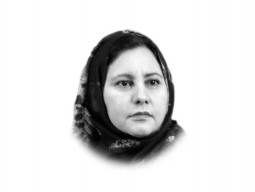
Therefore, the death of the al Qaeda heir has many regional consequences. First, it may incapacitate the outreach of al Qaeda which is already on the retreat in the region. Second, the IS or its affiliates will definitely gain edge over other jihadists making it easier for them to extend their influence in the region. Lastly, the region may experience destabilisation owing to unprecedented defection towards the IS indicating severe security challenges for Iran, Afghanistan and Pakistan.
There are four likely scenarios which might assist us in decoding the mystery involving the reported killing of Hamza in a CT operation.
First, it might be “a current intelligence sharing and a current disclosure exercise” on a past operation taken place in Afg-Pak-Iran region. In this scenario, the disclosure might have severe security implications for the region. Since the intelligence has been shared recently among key players, it is intentionally leaked to get maximum geopolitical benefit out of it. Iran might be linked to it in one way or another, to penalise it further regionally and internationally. Already, the US State Department officials are hinting towards the details that Iran has been giving refuge and protection to many top al Qaeda leaders. Such an assertion may also legitimise military action against Iran internationally. Furthermore, it may strengthen the IS in the region as the rate of desertion of al Qaeda foot soldiers may enhance many folds after the disclosure.
Second, it might be “a current intelligence sharing and a current disclosure exercise” on a fresh event. Such an ambiguous disclosure can put Pakistan, Iran and Afghanistan in a tight situation since neither place nor timing has been provided in it. It, therefore, encourages members of al Qaeda hiding in urban or rural centres to leave their core franchise and join other groups which are flexing their muscles and challenging the security apparatus in these countries. The only organisation that comes to mind is either the IS or its affiliates operating in the region. A spate of isolated acts of terrorism might be observed in the coming days in the region along with intensification of infighting between the IS and the Taliban in Afghanistan.
Third, it can be “an old intelligence sharing and a current disclosure exercise” on an old CT operation which has been verified now through multiple means, including insider or outsider source information and availability of a material evidence. Such a revelation may provide essential national political mileage to President Trump apart from extending wider strategic security policy making options for the region. Given that a tacit understanding exists between the Taliban and the AQIS i.e. Al Qaeda in Indian Subcontinent, the former is weakened as the news might trigger emergence of splinter groups challenging the Taliban in their strongholds.
Lastly, it can be “an old intelligence sharing and an old disclosure exercise” on a past operation which has been circulating among intelligence community members for some time but is confirmed recently by an intelligence agency on whose soil the incident took place which remained unconfirmed due to hostile environment prevailing against the US. Thus it is possible that the disclosure was made before but it lacked proper weightage due to unavailability of credible verification. Once the local intelligence agency has given proof and evidence about the occurrence of such an incident, the previous disclosure has gained credence and prominence.
According to media reports, Hamza bin Laden might be present in the border lands of Afghanistan, Pakistan, Iran or Syria. The possibility of his presence in Syria is minimal since the IS had been strengthening its foothold there for quite some time before being forced to draw back by the coalition forces. The only way he can be present in Syria is that he receives an active support of an intelligence agency of a regional or international actor. The Iranian intelligence apparatus has been supporting al Qaeda and Taliban leaders on its territory and reportedly Hamza bin Laden remained under house arrest in Iran before he moved to an undisclosed location. The western media has been alluding to such cooperation and trying to establish a nexus of Iranian intelligentsia with al Qaeda operatives. In both cases, whether there exists any such coordination or not, there may be alarm bells in the power corridors of the Iranian establishment.
Pakistan, Afghanistan and Iran share mountainous borders stretching over hundreds of miles where plenty of places are available for hideouts and safe houses. In many such border zones, the absence of complete or partial state machinery provides opportunity to many hostile groups to operate openly with impunity. The members of such groups or the tribes residing near the boundary can readily provide sanctuary to any al Qaeda member where he or she may live with ease and comfort.
In short, the death of Hamza has ominous ramifications for the region and a proactive action is required by law-enforcement agencies to forecast likely scenarios to minimise chances of any retaliatory action by al Qaeda and its affiliates.
Published in The Express Tribune, August 15th, 2019.
Like Opinion & Editorial on Facebook, follow @ETOpEd on Twitter to receive all updates on all our daily pieces.















COMMENTS
Comments are moderated and generally will be posted if they are on-topic and not abusive.
For more information, please see our Comments FAQ